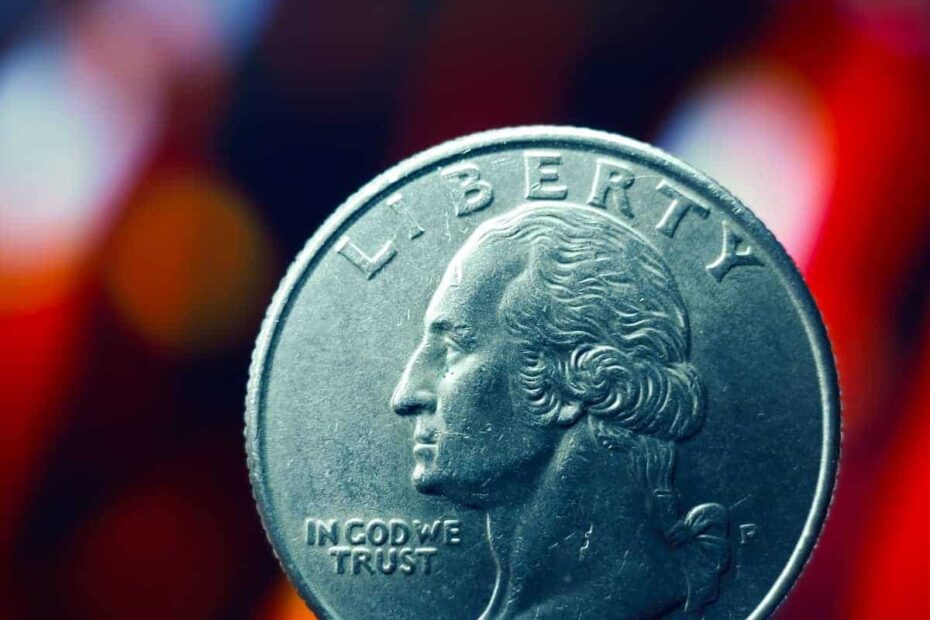A Collector‘s Personal Journey into Coin Rarity
Picture this: A crisp autumn morning, sunlight streaming through my study window, and a weathered wooden box filled with inherited coins sitting before me. As a third-generation coin collector, I‘ve learned that every quarter tells a story – and the 1982 quarter? Well, it‘s a narrative that goes far beyond its modest 25-cent face value.
The year 1982 wasn‘t just another moment in American monetary history; it was a pivotal time of economic transformation. The United States was emerging from one of the most challenging economic recessions since the Great Depression. Unemployment rates were soaring, industries were struggling, and the US Mint was navigating unprecedented financial constraints.
The Economic Landscape of 1982
When most people look at a quarter, they see mere currency. But for a seasoned collector like myself, each coin represents a complex tapestry of economic, technological, and cultural threads. The 1982 quarter emerged during a period of significant economic restructuring. President Ronald Reagan‘s administration was implementing aggressive economic policies, and the manufacturing sector was undergoing massive changes.
The US Mint, operating under these challenging conditions, continued its long-standing tradition of producing Washington quarters. However, the 1982 production run was unique. With limited resources and increasing production costs, the mint‘s approach to coin manufacturing became more strategic and precise.
Minting Magic: The Technical Marvel of 1982 Quarters
Let me take you behind the scenes of coin production. The 1982 quarters were crafted using sophisticated minting technologies that represented the cutting edge of metallurgical engineering at the time. The copper-nickel clad composition wasn‘t just a random choice – it was a carefully calculated decision balancing durability, cost-effectiveness, and performance.
Each quarter produced in Philadelphia, Denver, and San Francisco underwent rigorous quality control processes. The mint marks – those tiny letters that tell us where a coin was born – were more than just identifiers. They were signatures of pride from each mint‘s dedicated workers.
Rarity and Production Numbers
Understanding the rarity of 1982 quarters requires looking at production numbers. The Philadelphia mint produced approximately 500,931,000 quarters that year, while Denver minted around 480,042,788. The San Francisco mint, known for producing collector sets, created a mere 3,857,479 quarters.
These numbers might seem large, but remember – most of these coins entered circulation, getting worn down, lost, or simply forgotten. The pristine specimens? They‘re the true treasures.
The Hunt for Exceptional Specimens
As a collector, I‘ve learned that value isn‘t just about numbers – it‘s about condition, uniqueness, and story. A 1982 quarter in MS67 or MS68 grade is like finding a rare manuscript in an old library. The Professional Coin Grading Service (PCGS) has only verified 14 quarters at the MS67 level, making them extraordinary finds.
Understanding Coin Grading
Grading a coin isn‘t a simple task. It requires a trained eye, specialized equipment, and years of experience. Factors like surface preservation, strike quality, and the absence of significant marks all contribute to a coin‘s grade and subsequent value.
An MS68 1982 quarter isn‘t just a coin – it‘s a piece of history preserved in near-perfect condition. Collectors have paid upwards of [10,200] for such exceptional specimens, demonstrating the incredible value hidden in these small metallic discs.
Error Coins: The Collector‘s Holy Grail
Every collector dreams of discovering a coin with a unique error. The 1982 quarters offer several fascinating error variations:
Double die errors can transform an ordinary quarter into a [1,500] treasure. Misaligned die errors might fetch even higher prices, reaching [1,800] or more. These aren‘t just manufacturing mistakes – they‘re windows into the intricate world of coin production.
Preservation: More Than Just Keeping Coins Safe
Preserving coins isn‘t about locking them away – it‘s about creating an environment where history can be maintained. Proper storage means controlling humidity, avoiding direct handling, and using professional-grade protective holders.
Investment Potential and Market Dynamics
The market for rare coins is dynamic and complex. The 1982 quarter represents more than an investment – it‘s a tangible connection to a specific moment in American economic history.
Serious collectors understand that value isn‘t just monetary. It‘s about preservation, understanding, and respect for the craftsmanship behind each coin.
A Personal Reflection
After decades of collecting, I‘ve learned that every coin has a story. The 1982 quarter isn‘t just a piece of metal – it‘s a testament to American resilience, technological innovation, and the art of minting.
Whether you‘re a seasoned collector or someone who just found an interesting quarter in an old drawer, take a moment to appreciate the history in your hands.
Final Thoughts: The Ongoing Legacy of the 1982 Quarter
As markets evolve and technologies change, the 1982 quarter remains a fascinating chapter in numismatic history. Its value extends far beyond its monetary worth – it‘s a snapshot of a complex, challenging time in American economic development.
To the aspiring collector: keep searching, keep learning, and most importantly, keep appreciating the stories that coins can tell.
Disclaimer: Coin values are subject to market fluctuations. Always consult professional numismatists for precise valuations.
